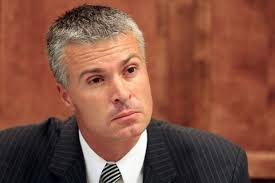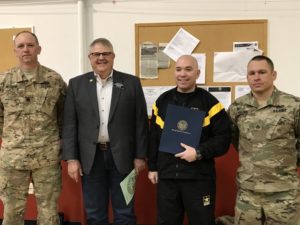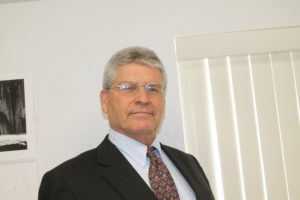
By Dana Hess
For the S.D. Newspaper Association
BROOKINGS — While most of the interest in the June 5 primary is directed to Republicans seeking nominations for the governorship and the U.S. House of Representatives, there is one measure on the ballot open to all registered voters in the state.
Amendment Y seeks to provide a fix for the unintended consequences that sprang up when voters approved Marsy’s Law in 2016.
Designed to protect the rights of crime victims, passage of Marsy’s Law caused some counties to invest heavily in victims’ rights personnel who then spent much of their time contacting the victims of petty crimes. Law enforcement officers found themselves handcuffed when it came to releasing the locations of crimes, essentially drying up their source of crime tips from the public.
Amendment Y allows law enforcement to share information in order to solve crimes and allows victims to opt in to the Marsy’s Law rights rather than having them apply automatically. The amendment also prevents anyone who feels their Marsy’s Law rights have been violated from filing a lawsuit.
“It really strengthen victims’ rights,” said Mark Mickelson, speaker of the state House of Representatives and the sponsor of House Joint Resolution 1004, the measure that put Amendment Y on the June ballot.
Marsy’s Law named for murder victim
Marsy’s Law is named for Marsalee “Marsy” Nicholas, a California college student who was stalked and killed by an ex-boyfriend. Marsy’s Law ballot measures have been bankrolled by her brother, billionaire Henry Nicholas.
Marsy’s Law measures have been passed in five states—South Dakota, North Dakota, Illinois, Ohio and California. It’s on the November ballot in five more states—Oklahoma, Nevada, Kentucky, Georgia and Florida.
South Dakota would be the first of the Marsy’s Law states to tweak the legislation. While originally seeking to overturn Marsy’s Law, Mickelson negotiated Amendment Y with the backers of the victims’ rights legislation.
“We support Amendment Y because it protects those rights while enhancing the ability of law enforcement agencies to work together and solve crimes,” said Sarah Shriver, South Dakota Communications Director for Marsy’s Law for All.
Unintended consequences pile up
After the passage of Marsy’s Law, the larger counties in South Dakota invested in more victims’ rights personnel. Many of the victim notifications they make are for minor crimes, but they are still required by the law.
Mickelson said allowing victims to opt in to Marsy’s Law will allow those counties to cut expenses or redirect their efforts to offer more help to the victims of felonies. The Sioux Falls Republican estimates that Marsy’s Law is costing counties between $500,000 and $1 million annually.
One consequence causing heartburn for media outlets is the Department of Public Safety’s decision to wait three days before releasing the names of accident victims.
According to Jenna Howell, an attorney with DPS, an opinion from the attorney general allowed accident victims to opt in on whether to invoke their rights. Howell said victims need some time to handle the anguish of a major accident.
“We don’t think it’s fair to have them decide on the side of the road,” Howell said.
That leaves media outlets relying on other sources. In Watertown, an accident victim’s name was unavailable to the Public Opinion for it’s story, but was presented in the same edition in the victim’s obituary.
“There’s something wrong with the system when the government isn’t releasing the names but we’re getting the name from the funeral home,” said Roger Whittle, editor of the Public Opinion.
“If it’s a particularly bad crash, we’ll learn who’s involved through social media,” said Elisa Sand, a reporter for the Aberdeen American News, “but we’d rather get that information from law enforcement.”
DPS isn’t likely to change the way it reports accidents, according to Howell, even if Amendment Y passes.
“Marsy’s law isn’t binding on social media or the public,” Howell said. “It’s just binding on the government.”
Amendment vote during primary an oddity
Mickelson said he pushed for including the vote on Amendment Y on the June ballot to save counties money and to open up records for the families of accident victims who are still waiting for reports.
If Amendment Y passes in June, it would go into effect July 1. If it was on the November ballot, Mickelson explained, it would not go into effect until July of 2019.
“If we did it in November, we’d have to wait a whole year,” Mickelson said. “That’s why we decided to do it in June.”
Special elections aren’t uncommon for the state, Mickelson said, noting Gov. Bill Janklow’s use of a special election for the sale of the State Cement Plant.
According to Kristin Gabriel of the Secretary of State’s office, “It is uncommon to have a ballot question on the primary election ballot in South Dakota. This is the first time the Legislature has placed a statewide ballot on the primary ballot.”
That decision wasn’t well received by all the members of the Legislature. House Joint Resolution 1004 originally passed through the House 65-0. It was then passed 22-13 in the Senate after being amended to include Amendment Y in the June election. Because of the amendment, HJR1004 had to return to the House were it passed 61-6.
The amendment was enough for a “nay” vote from Spencer Hawley, House Minority Leader from Brookings.
“I support the changes to Marsy’s Law,” Hawley said, “but I am against moving a constitutional amendment to a primary. Usually there is a very low turnout and the Democratic side there are not very many primaries this year.”
One lone anti-Amendment Y voice
The special election is just one of the problems that Cory Heidelberger has with Amendment Y. Heidelberger runs the liberal blog Dakota Free Press in Aberdeen where he is a Democratic candidate for state Senate. He’s also likely the only person speaking out against Amendment Y.
Heidelberger cites the $200,000 the Legislature appropriated for the special election as a sign that Marsy’s Law is costing the state even more than Amendment Y backers say it is.
“It’s costing us more to do this than a regular election in November,” Heidelberger said, noting that Republican primaries dominate the June 5 ballot this year. “It’s kind of a way for the Republicans to pick their voters.”










